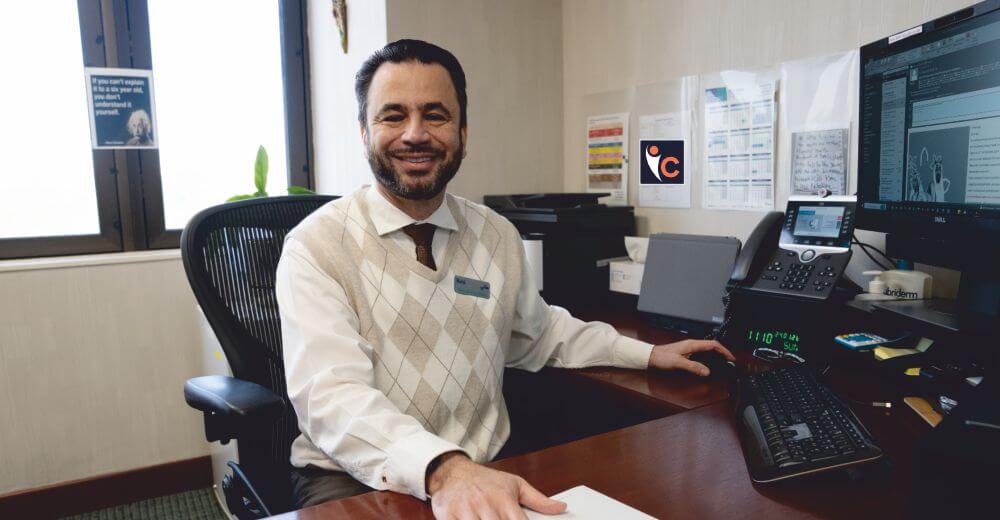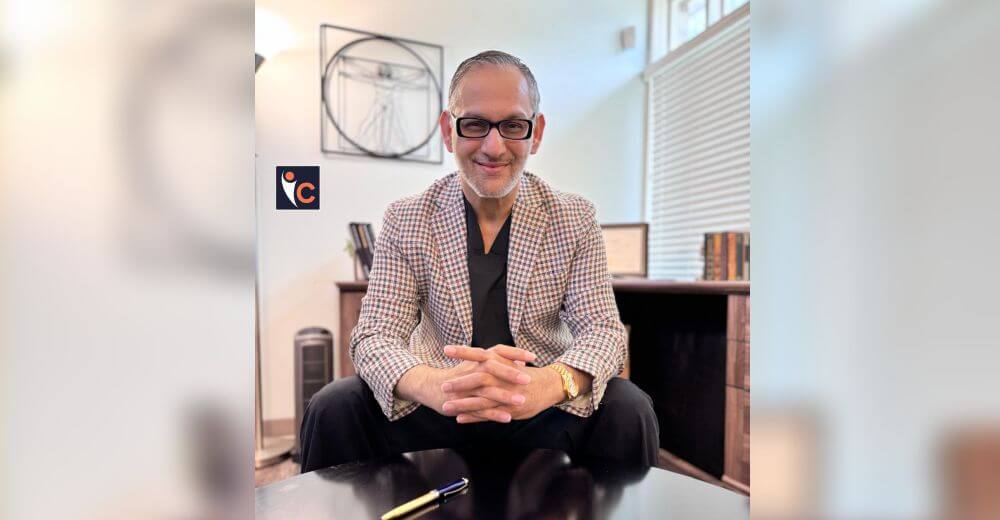Along the evolutionary thread of human development, health care has been the most sensitive node that demands keen attention. With many diseases, pandemics, and outbreaks unfolding over the globe, the pathogenic impact has grabbed global attention.
Microbes – although essential to human life – are tricky because they evolve rapidly. While some spread with a great publicity, like COVID-19, others are silent yet critically impactful. In the past decade, humans have been edged into a “silent pandemic” caused by bacterial resistance.
In 2019, approximately 4.95 million (3.62-6.57) deaths were estimated to be related to Antimicrobial Resistance (AMR), with 95% of the deaths, i.e., 1.27 million deaths, attributed directly to it, as per the global Antibacterial Resistance collaborators. Clearly, new treatments are needed, especially those that would decrease the burden of antimicrobial resistance, have a low potential for adverse events, and be relatively convenient to use.
MicuRx Pharmaceuticals, a pioneering company founded in 2007, addresses the need to come up with new antibiotics. Through consistent research, the company develops innovative therapeutics and beneficial drugs which addresses unmet medical needs.
We had the exclusive chance to interview MicuRx’s veteran visionary Co-founder and CEO, Zhengyu Yuan, Ph.D., where he discussed the successful journey of a pharmaceutical startup company from early R&D through launch of their own medicines. Along with it, he shared some exclusive insights about the industry along with his healthcare perspective of the pharmaceutical community.
Let’s explore the story of MicuRx through the following interview.
Zhengyu, please brief our audience about MicuRx. Kindly tell us the source of inspiration for venturing into the medical industry.
In the early 1980s, when I first came to the US for my postgraduate study at Cornell University, I learned the fascinating story of how ACE inhibitors (for blood pressure control) were “rationally designed” using new advances in chemistry and biology. These drugs eventually became lifesavers for millions. Rational drug design means we can find a drug not by chance but by our own wisdom and skill using a more efficient, modern approach. I told myself then: I want to do that!
Tell us about yourself and shed some light on your journey as the CEO of MicuRx.
By 2005, there were two trends that became obvious: multidrug-resistant (MDR) bacteria became a bigger problem in our society. But ironically, pharma companies were either exiting or on their way to exiting the antibacterial field.
Therefore, the need for novel drugs against MDR bacteria would become a true “unmet clinical need.” We believe that this crisis offered both challenges and opportunities, and we were passionate about contributing to solutions. Yet despite the challenges, MicuRx has made steady progress from R&D to commercialization.
Can you elaborate upon the core values on which MicuRx is built and what is the mission of the company?
MicuRx’s motto is “Better Therapy Through Superior Medicines.” We are not only developing new drugs but also better drugs that are able to address clinical problems which existing treatments may not be able to solve.
We provide new options to physicians and patients with clear benefits. And we keep doing what we are good at in the focused area of infectious diseases, with the aim of building a company that people trust and respect.
What unmet patient medical needs did you identify that drove you to establish MicuRx?
After working in the antimicrobial field for ten years at Vicuron, I realized that finding an antimicrobial that is effective is not the hardest challenge. The hardest challenge is developing an antibiotic that is safe because, not surprisingly, drugs that kill bacteria often cause safety problems for humans.
Safety concerns can limit the use of very effective antibiotics. One very crucial product, called linezolid (Zyvox®) currently commercialized by Pfizer, is an important drug to treat resistant Gram-positive bacteria. But linezolid has well-known hematological toxicity, which typically limits use of the product to less than fourteen days. Although linezolid became a blockbuster, it could have been even more widely adopted if the safety profile had been better. An improved safety-to-efficacy profile is especially important for infections that can be treated in the outpatient setting for less severe infections in otherwise healthy adults.
A second need is to have oral antibiotics effective against resistant pathogens to avoid or reduce the need for hospitalization. Many antibiotics effective against drug-resistant bacteria are available only in intravenous (IV) formulations that require hospitalization or daily visits to an outpatient infusion clinic. We wanted to create an antibiotic which has flexibility to be used in hospital as an IV or in the outpatient setting as an oral tablet. Contezolid is an oral antibiotic with very potent antimicrobial activity against two important Gram-positive resistant pathogens that cause a variety of infections: methicillin-resistant Staphylococcus aureus (MRSA) and vancomycin-resistant Enterococcus (VRE). Oral contezolid is well suited for the millions of skin infections, diabetic foot infections, and other infection types that need treatments with potent activity against MRSA and a better safety profile without needing to be hospitalized.
How has technology been leveraged in MicuRx’s drug discovery and screening? What processes support MicuRx’s products to attain maximum value and high success rates while maintaining lower costs?
First, we established corporate operations that were very unique at the time and that have been copied numerous times since as a new best practice: trans-Pacific operations. MicuRx leads research and development from our offices in California and conducts research in both the US and the established laboratories in Shanghai, China. Our goal was to conduct research using international standards supported by China’s lower cost structure and rapid response time. MicuRx was one of the first start-up pharmaceutical companies to have a trans-Pacific business model.
Second, we set up our R&D process to ensure the critical parameters were addressed from the beginning. We believe a successful antibiotic will be a drug with good efficacy, safety, and a low tendency to develop resistance, which are the major reasons causing failures in clinical trials. Therefore, at the beginning of our discovery program, we set up potency and toxicity test models to evaluate the compounds we designed to achieve the best balance of benefit to risk.
MicuRx has its own BSL-2 lab, so we can efficiently conduct microbiological studies including drug resistance studies. We look for potent compounds that also have safety improvements to provide a well-balanced drug profile. MicuRx has a strong team of scientists to ensure the delivery of drug candidates that meet our goal. We also leverage externally contracted organizations with verified quality systems to conduct GxP studies. This process at the screening and development stages reduces the risk of failure in clinical development in a cost-effective way.
How do MicuRx’s products manage to address the unmet needs of patients?
First, MicuRx has a goal to address medical needs that are not adequately addressed by currently available therapies. Then we conduct targeted drug discovery to create new compounds. Our first antibiotic, contezolid, was developed to reduce safety risks for an oxazolidinone antibacterial while preserving effectiveness in treating infections caused by multidrug-resistant bacteria.
Specifically, improving hematological safety compared to linezolid was a key goal of the contezolid program. Success followed, and contezolid tablets were approved for complicated skin and soft tissue infections in China in 2021. International clinical trials are currently underway for contezolid and its intravenous prodrug, contezolid acefosamil, in acute bacterial skin and skin structure infections, and diabetic foot infections.
Our new programs in anti-infectives and other therapeutic areas will take the same approach of identifying unmet medical needs and creating new drugs to address them to improve patient outcomes.
How has the approval of MicuRx’s first drug, contezolid, led to a new journey of novel anti-infective drugs in China?
China is both the largest manufacturer and consumer of antibiotics in the world. So antimicrobial resistance is high in China. However, very few new antibiotics were initially discovered in China; most research is done in the US or the Europe. So, the approval of contezolid as a MDR antibiotic drug actually developed in China, is a major milestone. This approval gives MicuRx an opportunity to evolve into a commercial-stage company. We have built a dedicated commercial team that has a lot of experience in the commercialization of new antibiotics in China.
As the original developer of this drug, MicuRx has the advantage of being able to contact and respond to key opinion leaders and physicians in an effective way. MicuRx has also started to work with clinical experts to improve awareness of antimicrobial resistance and clinical practice for infections caused by MDR bacteria.
Zhengyu, Please describe the trailblazing corporate approach the company took to go from research, discovery, clinical and regulatory approval, and ultimately commercialization in China’s first global market.
MicuRx is deeply rooted in China, with the majority of our research and all of our commercialization team currently based there. With a good understanding of the local market practice and wide connections with KOLs, suppliers, and business partners, our team has successfully transformed MicuRx China from a pure research center into a fully functional pharmaceutical company. With our first drug approved in China and our IPO in the China STAR market in August of this year, MicuRx China becomes the financial and strategic driving force for MicuRx’s global business.
What advice would you like to give to budding entrepreneurs and enthusiasts aspiring to venture into the medical industry?
Never give up! You will have a lot of failures and difficult times, and sometimes it even looks impossible to move forward. Only those who persist will successfully reach the other side.
How do you envision scaling your organization’s services and operations in 2022 and beyond?
In addition to bacterial infections, the business of MicuRx will expand to a broader range of infectious diseases, including fungal and viral infections. We believe there are many unmet medical needs due to diseases caused by these other pathogens. With the growth of drug resistance, the use of immunotherapy, and an ageing population, the need for better therapy will continue to increase. And no doubt, the world needs to be prepared for the next pandemic as well.
As a commercial-stage company, we will also actively contribute to public health policy development and improve infection management in both the community and the hospital. MicuRx will always follow our mission to deliver “Better Therapy Through Superior Medicine” for infective diseases.
The Veteran Leader
Dr. Zhengyu Yuan is the Co-founder and Chief Executive Officer of MicuRx. With over 30 years of experience in drug discovery and development, focusing on novel antibiotics, and more than 30 publications in peer-reviewed scientific and pharmaceutical industry journals, he is responsible for the overall control of MicuRx’s strategic development and pipeline layout.
Prior to MicuRx, Dr. Yuan was senior vice president of Vicuron, responsible for the corporate discovery and early drug development. Vicuron developed the antibacterial drug dalbavancin (Dalvance®) and the antifungal drug anidulafungin (Eraxis®). Vicuron went public on Nasdaq in 2000 and was acquired by Pfizer in June 2005 for $1.9 billion, which was the largest deal in antimicrobial development that year.
Prior to Vicuron, Dr. Yuan also held various management positions at Syntex and Affymax. Dr. Yuan holds a Ph.D. in Biophysical Chemistry from Cornell University.
Awards & Recognitions
- Contezolid received QIDP (Qualified Infectious Disease Product) status from the FDA for Acute Bacterial Skin and Skin Structure Infections (ABSSSI), and was granted Priority Review status by the NMPA (National Medical Products Administration, i.e., the Chinese equivalent of the FDA).
- Once contezolid was approved by NMPA, it was listed on the China NRDL (National Reimbursement Drug List, which is a national formulary) within one year, which is extremely quick.
Next Story: https://insightscare.com/ekuberg-pharma-innovating-the-pharmaceutical-sector/















